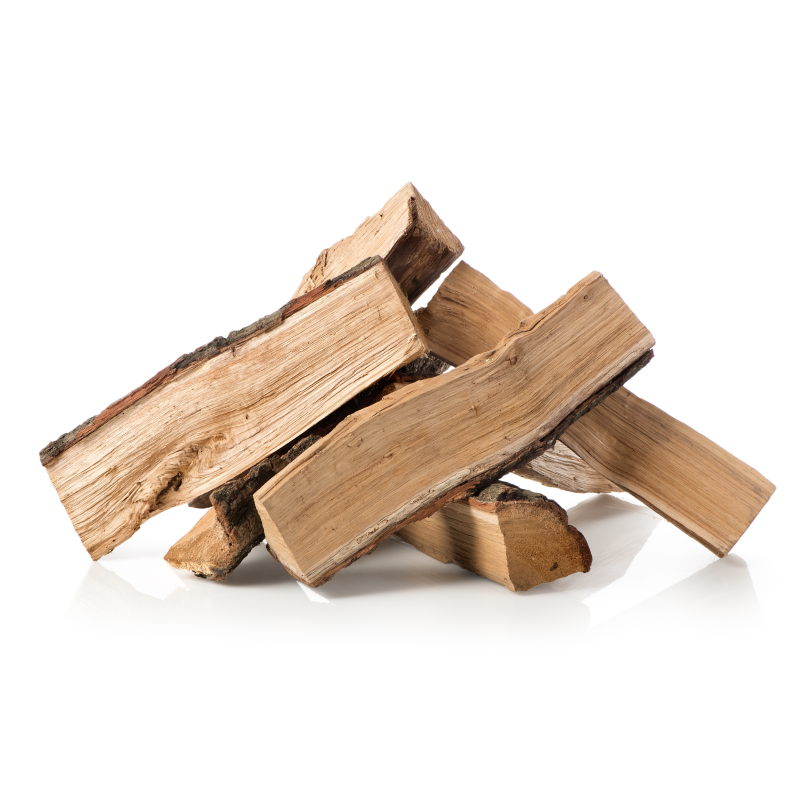When I think about home, I think about fires in the fireplace. I have incredible memories of time around the fireplace with my family. I am pretty sure that if the climate and family rituals permitted, my dad would have had a fire burning in the fireplace every day of the year.
When I was younger my dad would actually turn on the A/C on an Alabama fall afternoon if the weather wasn't cooperating with his "anytime the temperature goes below 60F you can have a fire” rule of thumb just to have a fire going while watching the Crimson Tide play. This never made sense to me until I became a homeowner with a fireplace of my own. Now I can proudly say that I have done the exact same thing and that I too would have a fire going at all times if I could.
I have probably gotten at least 100 lessons in building fires from my dad. First, he would crumble up newspaper and put those balls of paper between his shiny, brass andirons. The paper or “tinder” is the foundation of the bottoms-up fire. Then he would put 4 to 5 sticks of fatwood or “kindling,” a naturally impregnated pine wood starter, on top of the newspaper. He would then carefully place 3 specifically chosen logs horizontally across the andirons. Then he would put 2 more diagonally at a 45-degree angle on top of those base logs and then repeat the process until the logs were 5 layers tall, or about 9 to 10 logs in total.
Once the logs were set, he would twist up a few more sheets of newspaper to create a torch looking thing, he would light the top of the paper, and then hold it up inside the fireplace to heat up the air in the chimney so that the fire would "draw" better. Finally, he would light the tinder and kindling with the torch and replace the safety screen. I would just stand there and watch in awe as the flames engulfed the fatwood and then the logs and shoot up into the chimney. It is my favorite part of the whole fire experience. Mostly because there's just a lot of action - lots of flames, lots of sparks and crackles, and because I could yell out "Dad! You built a rage'r!" in my southern accent.
I later learned that Dad's approach was a mix of the "log cabin" and "sandwich" techniques and that my results would vary significantly from his based on the environment. For example, this structure doesn't work very well when trying to build a campfire for various reasons. This structure may be too crowded for small fireboxes or for cylindrical, smokeless fire pits. So I have tested a bunch of different methods to try to find the one method that will work 99% of the time which I now call the "LLAMAWOOD" method - basically the "sandwich" method with LLAMAWOOD. This method requires no container (i.e. fire box, fire pit, or oven), hearth, or andirons. Here is the LLAMAWOOD way:
- Understand your environment. Are you inside? How big is your firebox? Do you have andirons? Are you outside? Where is the wind coming from? Do you have something to put out the fire in an emergency or when you are ready to leave the site?
- Create a stable foundation. I use nice-sized logs about 12 inches apart. If you have a fire basket or end irons those become your stable foundation.
- Put some smaller logs perpendicular to the foundation and then another set parallel to the foundation.
- Drop some tinder (newspaper, lint, cotton balls soak in petroleum jelly) in the space between the center logs.
- Layer on some kindling on top of the paper to fill in the gap. I use "fatwood", a naturally impregnated fire starter, but you can use dry thin twigs/sticks or even pine cones.
- Put another layer of logs across the kindling getting progressively smaller as you go up in height.
- Stuff more tinder into the gap and close off with more kindling like you did the first go around. Then you can top with a little more tinder (or if you have easy access to the top tinder under the top kindling you don't really need that last top layer of tinder)
- Ignite tinder!
A couple of additional notes:
- Don't underestimate the importance of airflow when building your stack up. You want to make sure that your fire has an ample supply of fresh air. Too much wood and your fire will never catch. It is better to be on the smaller side than the larger side because you can always add more logs once the smaller fire gets going.
- This structure is so versatile because of how stable it is. If built correctly, it will not fall over. Eventually, the logs will burn through and break but if you built it right the smaller logs on top will break down first and just fall into the fire providing more heat for the larger logs below to consume. It also doesn't require a lot of early maintenance. You really can set it and forget it and just start adding logs 30 to 60 minutes into the burn. Great for event spaces where staff are tending the fire pits and serving customers food and beverages.


